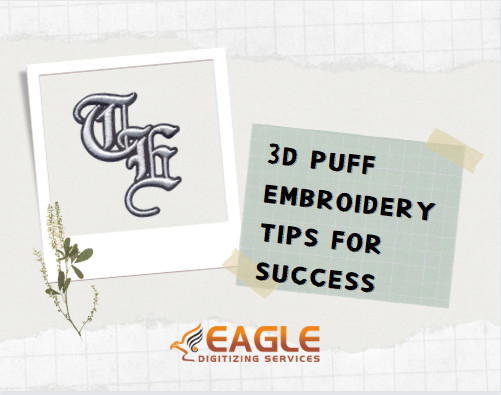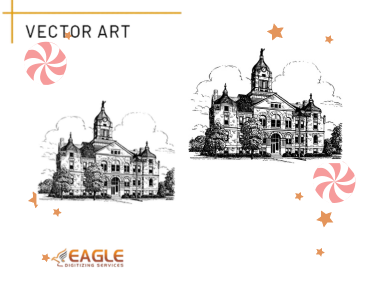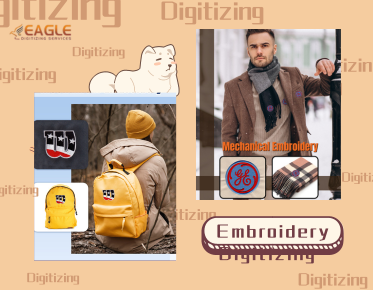Growing Your Embroidery Company: Examining Puffy Embroidery's Benefits
Puffy embroidery is a method where a special foam material is used to create raised, 3D patterns on fabric. Instead of a flat stitch, the embroidery puffs up, adding texture, depth, and tactile quality to designs. This technique uses heat to bond the foam to the fabric, and the result is nothing short of eye-catching. The trend’s rapid rise can be attributed to several factors. First, the demand for personalized, custom-made products is higher than ever before. Customers want something unique, something that stands out, and puffy embroidery does exactly that. Whether it’s a bold logo, a playful design, or an intricate monogram, the three-dimensionality of puffy embroidery grabs attention in a way that flat embroidery simply can’t match. Its uniqueness in design is irresistible, as it gives the illusion of movement and depth on a typically flat surface. Moreover, as fashion continually gravitates toward more expressive, eye-catching designs, puffy embroidery serves as a perfect way to create standout pieces that feel both luxurious and fun. It’s a fresh take on customization, offering an elevated sense of creativity while maintaining the timeless appeal of traditional embroidery.
Bringing
Texture to Life: How Puffy Embroidery Stands Out
Puffy embroidery transcends the world of mere visual appeal—it brings a texture
to life. Unlike standard flat embroidery, which
is often confined to traditional logos and lettering, puffy embroidery adds a
dynamic element that can be felt as much as it is seen. The raised effect
invites touch, encouraging curiosity from onlookers and adding a multi-sensory
element to the finished piece. Imagine a hoodie with a bold, embroidered logo
that doesn’t just sit flat against the fabric but pops out, intriguingly
drawing attention. The textural quality of the technique is particularly
desirable in high-end fashion, where tactile experiences are just as important
as visual ones. This textural element isn’t just confined to clothing; it can
also transform accessories and home décor items, adding depth to an array of
products. This textural quality is why puffy embroidery works so well in the
fashion industry. It enhances a garment's personality, making it a piece of
wearable art. From hats and jackets to t-shirts and bags, the tactile, 3D
effect provides an additional layer of sophistication. The allure of puffy
embroidery lies not only in its aesthetic but also in the way it transforms
ordinary fabrics into something more immersive and engaging.
The
Visual Impact of Puffy Embroidery on Garments and Accessories
When you think of embroidery, you may typically imagine a subtle, thread-based
design that complements the texture of the fabric. Puffy embroidery, however,
commands attention. Its bold, elevated appearance ensures it never fades into
the background. A puffy monogram on a jacket? Unmistakably chic. A puffy floral
design on a pillow? It turns an ordinary décor item into an eye-catching
statement piece. This visual prominence makes puffy embroidery ideal for
fashion-forward consumers who seek unique, attention-grabbing designs. It adds
a sense of high fashion and uniqueness to otherwise simple garments. What truly
sets it apart is the way light plays off the raised stitches. The
dimensionality means that the design catches and reflects light differently
depending on the angle, giving the embroidery an ever-changing effect. This
dynamic look is perfect for those who want a statement piece that evolves with
each glance. It’s embroidery that demands to be noticed, with textures that
change and reveal new nuances with every movement. Whether on clothing,
accessories, or décor, puffy embroidery creates a visual experience that
captivates and engages.
The
3D Effect: Adding Depth and Interest to Your Designs
The allure of the 3D effect lies in its ability to add a fresh dimension to
otherwise flat designs. Puffy embroidery takes the concept of depth and
interest to a whole new level. For a design to come to life, it needs to have
layers—and puffy embroidery does exactly that. Whether you’re stitching a bold
slogan or a delicate flower, the raised foam gives the design an almost
sculptural quality. This tactile element makes the design not only more
visually compelling but also more interactive. The three-dimensionality invites
viewers to explore the design from all angles, offering a richer visual
experience. The added volume also creates an organic flow, where the design
moves with the fabric, enhancing its overall fluidity. Whether it’s the way the
embroidery casts shadows or the soft, plush texture it creates, the 3D effect
of puffy embroidery adds a tactile element to the visual, making it more
immersive and appealing. The combination of texture and shape elevates the
design, drawing attention and making it an undeniable focal point.
The
Benefits of Adding Puffy Embroidery to Your Business
Puffy embroidery is more than just a trendy aesthetic; it’s a valuable tool
that can help elevate your business. As the customization market grows, so does
the demand for innovative and unique designs. Puffy embroidery offers just
that—something truly unique and impossible to replicate in the same way using
flat embroidery. Let’s look at why adding this technique to your business can
give you a competitive advantage. The ability to provide 3D embroidery opens up
a wealth of new design opportunities, offering your clients products that are
more interactive and visually stimulating than ever before. By introducing
puffy embroidery into your offering, you immediately set yourself apart from
the competition, as few businesses currently harness the full potential of this
textured design technique.
A
Competitive Edge in the Customization Market
Customization has become a key selling point for many businesses, especially in
the world of fashion and accessories. Customers are looking for products that
reflect their individuality, and they’re willing to pay a premium for it. By
offering puffy embroidery, you set yourself apart from competitors who rely on traditional embroidery techniques. This
differentiation positions your brand as forward-thinking and
innovative—qualities that attract customers looking for something fresh and
exciting. Puffy embroidery offers businesses an opportunity to tap into a niche
market that values individuality and distinctive design. This differentiation
positions your brand as a trailblazer in the customization space, attracting
customers who want one-of-a-kind, personalized products that reflect their
style and personality. The uniqueness of this technique also serves as a
conversation starter, helping to generate buzz and attract attention through word-of-mouth
and social media.
Capturing
the Attention of Fashion-Forward Consumers
The beauty of puffy embroidery lies in its versatility, making it suitable for
everything from streetwear to high fashion. As trends in the fashion world
continue to evolve, consumers are looking for unique ways to express
themselves. Puffy embroidery taps into this desire by offering designs that are
not only bold and modern but also highly customizable. Fashion-forward
individuals are always on the hunt for that next big trend, and puffy
embroidery offers just that—a tactile, dynamic style that resonates with those
seeking standout, personalized fashion statements. Whether it's on a luxury
jacket, a designer hoodie, or a pair of unique shoes, puffy embroidery adds
that extra "wow" factor that elevates even the simplest of designs.
The appeal lies in its ability to bridge the gap between luxury and casual,
making it an ideal fit for various sectors of fashion. As this trend gains
momentum, consumers seeking cutting-edge, one-of-a-kind designs will
increasingly turn to puffy embroidery to define their style.
Offering Unique, High-Value Products That Command Higher Prices
With its intricate texture and customizability, puffy embroidery
naturally elevates the perceived value of any item it’s added to. Consumers are
often willing to pay more for products that offer something extra, whether it’s
in the form of luxury materials, personalized designs, or unique crafting
techniques. Puffy embroidery provides that extra “wow” factor, helping to
justify a higher price point. It transforms an ordinary product into something
exclusive, thereby offering you the opportunity to charge more for your custom
designs. The technique’s uniqueness adds a layer of prestige and exclusivity to
any product, setting it apart in the marketplace. As customers continue to
crave distinctiveness and originality in their fashion choices, puffy
embroidery provides the perfect solution, allowing businesses to cater to a
high-value demographic willing to invest in quality and innovation. The
increased perceived value can be a game-changer for your bottom line,
particularly when you’re catering to an audience that appreciates quality and
originality.
Techniques
and Tools for Mastering Puffy Embroidery
Mastering puffy embroidery requires more than just skill—it requires
the right tools, materials, and techniques. Understanding how to work with the
unique properties of foam and fabric is essential for achieving the perfect
puffy effect. This expertise ensures your designs are both functional and
aesthetically pleasing, making the learning curve an important consideration
for any business looking to implement this technique. Fine-tuning these
elements will allow you to maintain a consistently high standard of work,
regardless of the complexity of the design.
Essential
Tools and Equipment for Puffy Embroidery
To get started with puffy embroidery, you’ll need specialized tools designed to
handle the raised effect. A high-quality embroiderymachine with the ability to adjust settings for tension and stitch
length is crucial. In addition, you’ll need foam specifically designed for embroidery
purposes, as well as heat press equipment to bond the foam to the fabric. The
foam should be light yet dense enough to maintain the desired puffed effect.
It's essential to choose foam that has excellent adhesion properties and the
ability to retain its shape after stitching. Furthermore, a sturdy stabilizer
is essential to ensure the fabric remains firm while being embroidered,
preventing any unwanted shifting or puckering during the stitching process.
Additionally, it's vital to invest in strong needles that can handle both the
foam and fabric without causing snags or uneven stitching.
Understanding the Best Fabrics for Puffy Embroidery
The texture of puffy embroidery requires certain types of fabrics that can
handle the raised effect without warping or shrinking. Cotton, polyester
blends, and denim are great choices for this technique. These fabrics hold the
foam well, ensuring the embroidery pops without becoming distorted. Cotton,
with its soft texture, provides a comfortable surface for puffy embroidery
while remaining sturdy enough to support the raised foam. On the other hand,
fabrics like silk or lightweight materials may not support the puffy effect as
well due to their delicate nature. These fabrics may lack the necessary
structure to maintain the foam’s height, resulting in a flattened, less dynamic
effect. Testing different fabrics can help determine the best materials for
your specific designs, ensuring the puffy embroidery stays bold and lasting.
Key Steps in Perfecting the Puffy Effect
To master puffy embroidery, it’s essential to follow a few key steps. Begin by choosing your design carefully—remember, bold, clear shapes work best with this technique. Intricate or overly detailed designs may not achieve the desired raised effect as effectively as simpler, bolder shapes. Next, select the right foam thickness to match your design and fabric type. The foam’s density can impact the final result, so experimenting with different thicknesses helps achieve the perfect puff. The application of foam must be even, and heat pressing is essential to ensure it adheres properly to the fabric. Ensure the foam is securely bonded to the fabric to prevent any shifting during the embroidery process. Finally, perfecting your stitch tension and machine settings will prevent the foam from losing its puffy effect during the stitching process. Ensuring that your machine is calibrated correctly and that the thread tension is right will prevent unwanted flattening of the foam while maintaining the design's dimensionality.



